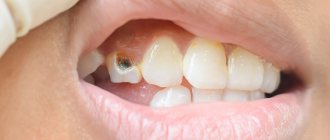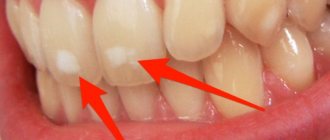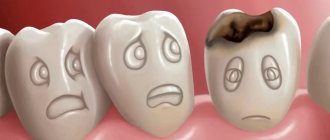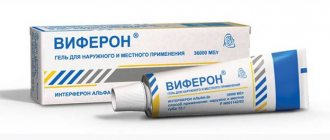What is caries and its 4 stages
Human teeth have a multilayer structure. The inner layer is the pulp, consisting of blood capillaries and nerve endings, followed by dentin, which forms the pulp cavity. The root part of the teeth is covered with cement, the crown part is covered with enamel about 2 mm thick. It protects the inner layers from traumatic external influences. Scientists have found that this is the hardest tissue in the human body. It consists of 97% inorganic substances. But even such a durable fabric can begin to collapse for various reasons (they will be discussed a little later). This process is called caries.
Caries is a dental disease that causes pathological destruction of hard tooth tissues.
The process starts with the enamel. Without treatment, the disease progresses and destroys dentin and reaches the pulp. Its development can be triggered by a number of external and internal factors. Without treatment, it can result in tooth loss and infection of periodontal tissue. According to statistics, this is the most common disease on the planet; more than 93% of the world's population suffered from it. Timely initiation of treatment therapy guarantees a positive result. In its development, caries goes through 4 stages without treatment:
- spot stage – demineralization of a local area of the surface, visually noticeable as a white matte spot. There are no other symptoms;
- superficial phase – destruction of the enamel layer. A reaction to external stimuli appears (hot, cold, sweet, sour);
- medium – the pathological process begins to destroy dentin. Pain is added to the early symptoms;
- deep – the affected area increases, pain becomes constant.
Indications for treatment
You should make an appointment with a doctor if a white spot on the enamel surface becomes noticeable or its color has darkened. This should also be done if a piece of a tooth breaks off or a crack appears on it, or the border of a previously placed filling has darkened. A clear indication is the formation of a carious cavity, the appearance of a reaction to irritants, and pain. You will have to postpone going to the dentist if you have an infectious disease or herpes in the acute phase. Treatment during pregnancy must be agreed upon with the attending obstetrician-gynecologist.
Important: the sooner the patient contacts the dentist, the easier it will be to stop the pathological process. Therefore, a preventive visit to the doctor is no less important than a visit to the doctor when symptoms appear.
3).Exacerbation of chronic pulpitis.
Complaints: Pulsating, prolonged pain, aggravated by temperature stimuli in ... (tooth formula). Night pain.
Objectively: on…. (name) surface...(tooth formula) carious cavity filled with softened dentin, filling remains, food debris. Probing is sharply painful at one point. When probed, the pulp bleeds. Temperature stimuli cause sharp, trace pain. Percussion is negative.
R.V.G.
Treatment: Under topical anesthesia….(name) and
with infiltration (conduction) anesthesia….. (name) the tooth cavity is opened. Amputation, extirpation. Root canals are mechanically and medicinally treated. Length (mm)…. ISO….. Sealed (description of materials and technology)
RVG control: the root canal is obturated uniformly and tightly along its entire length to the physiological opening. Temporary bandage.
Second visit: No complaints
Objectively: The temporary dressing has been preserved. Percussion is negative.
Treatment: ....(description of manipulations, pin, gasket, filling, restoration, tab indicating materials and color)
Methods used to treat the disease at different stages
Varying degrees of damage to dental tissue dictate the need for an individual approach in each specific case. So, at the white spot stage, it is necessary either to mineralize the enamel to restore it, or to remove the stain using a minimally invasive infiltration method without affecting healthy tissue. If necrotic substances are present, they must be carefully removed, the cleaned surface must be treated with an antiseptic and a seal must be placed. If the pathology has led to significant destruction of the dental unit, then in addition to the described actions it will be necessary to restore the shape of the tooth. This is done using the method of restoration or dentures.
Protocol for classical treatment of deep caries
- Diagnosis of the degree of tissue damage (including using x-rays)
- Performing local anesthesia
- Drilling out the affected dentin, giving the cavity a geometric shape (if pulp damage is detected, depulpation will be performed)
- Antiseptic treatment
- Adding calcium preparation
- Installing a temporary filling
- After 2–3 days, remove the temporary filling; if the condition of the cavity is satisfactory, fix the permanent filling
- Sanding and polishing
Note: specialists from the “Smile” clinic network have extensive practical experience in caries treatment. The use of modern equipment allows us to provide assistance to patients in clinical situations of any severity.
Features of deep caries
In some cases, deep caries cannot be distinguished from chronic irreversible pulpitis due to the similarity of the picture and the patient’s complaints. A detailed interview with the patient increases the accuracy of diagnosing deep caries in the case when the patient listens to his feelings and can accurately describe them.
How to care for treated teeth
Dentists advise not to eat for a couple of hours after installing a permanent filling (residual effects of anesthesia can cause injury to the oral mucosa). During the day, do not apply increased pressure to the sealed area, i.e. do not chew nuts and other particularly hard foods. It is possible that the filling will cause slight discomfort. If it does not go away within a week, you should contact your dentist to correct the shape of the filling. Dental care after visiting the clinic is the same as usual: brushing your teeth twice a day, rinsing your mouth after eating and drinking sugary drinks.
The dental network offers services for the diagnosis and effective treatment of dental caries at any stage of its development. Contacting our branches has significant advantages:
- treatment by highly qualified doctors;
- compliance with treatment protocols that meet international standards;
- family and savings discounts;
- stable cost of services;
- Convenient daily work schedule.
You can contact any of the branches of our clinic in Moscow, located within walking distance from metro stations:
- Art. Alekseevskaya (VDNKh district, etc. Mira), address: st. 3rd Mytishchiskaya house 3, building 2;
- Art. Shelepikha, address: Shelepikhinskaya embankment, address: building 34, building 1.
Modern technologies and techniques used in our clinic make each stage of treatment effective. The high qualifications of our specialists serve as a guarantee of quality and safety. The health of your teeth is in good hands!
Root canal treatment protocol
1. Questioning, examination of the oral cavity, assessment of x-rays and/or CT (hard dental tissues containing the pulp may have a different configuration in a person, this must be identified before starting treatment).
2. Application anesthesia of the mucous membrane.
3. Injection anesthesia (infiltration or conduction).
4. If necessary, creating conditions for the application of a rubber dam (removal of failed restorations, caries, restoration of tooth walls).
5. Application of a rubber dam.
A rubber dam is a scarf made of natural latex, which is put on the tooth and secured to it with a clasp. The rubber dam protects the patient's mouth from caustic medical solutions such as sodium hypochlorite. In addition, one of the goals of root canal treatment is to reduce the amount of infection in the tooth canal to a minimum. If the tooth is poorly isolated from the oral cavity, then it is possible that infected saliva will get there during treatment, which means that the effectiveness of treatment will greatly decrease and complications are possible in the future.
6. The use of magnifying devices by the dentist (binoculars and operating microscope).
7. Creation of access to root canals.
A well-executed access is an integral part for achieving a successful result of endodontic treatment, which allows for complete rinsing, facilitating the formation and, ultimately, high-quality filling of the canal. Access is a smooth, straight path to the root canal system, and ultimately to the apex.
8. Detection of root canal orifices.
Only with the use of an operating microscope can one detect the mouths of all root
channels.
9. Determination of the length of the root canal.
Determining the working length involves the use of special devices - apex locators. The principle of their operation is based on the fact that the periodontium produces an electrical potential that is different from dentin. An electrode attached to the patient's lip closes an electric arc, the impulse from which is transferred to the monitor. Our clinic uses the latest generation apex locators with a 3-D screen.
10. Root canal treatment.
Today, endodontic science has extensive information about the structure of the root canal system. The internal morphology of the tooth is extremely complex and varied. In the vast majority of cases, the canals have an irregular shape, different diameters, numerous undercuts, many lateral canals depart from the main canal at different levels, and there are numerous anastomoses and isthmuses between the root canals. The morphology of the apical third of the root is very complex. It is known that the main canal in the apical part forms a delta and opens at the root apex with not one, but several apical openings. Based on this, it becomes obvious that such a complex system is not possible to clean only mechanically. Therefore, high-quality and effective irrigation (washing) of root canals is of great importance.
Irrigation has two major goals:
1. Cleansing the root canal system due to the chemical dissolution of organic and inorganic residues, as well as their mechanical washing out with a stream of liquid.
2. Disinfection of the root canal system.
All irrigation techniques can be divided into 5 groups (Van der Sluis, 2007):
• Manual
• Ultrasonic
• Sound (EndoActivator)
• Laser (the solution is activated by a laser)
• Hydrodynamic (RinsEndo, EndoVac)
For successful irrigation, it is necessary that the disinfectant solution be delivered to the entire working length of the root canal. High-quality preparation and formation of the root canal helps to create the necessary reservoir for the irrigation solution and opportunities for its activation.
Modern requirements for endodontic treatment confront the doctor with the task of not just going through and treating the root canal, but also performing treatment in the shortest possible time, with maximum savings of time and effort for the doctor and the patient, while maximally preserving the original natural morphology of the canal. Rotary NiTi instruments enable the doctor to treat and preserve teeth with crooked, narrow, obliterated canals.
TASKS AND STAGES OF INSTRUMENTAL TREATMENT OF THE ROOT CANAL
Mechanical processing involves solving the following problems:
1) elimination of the source of infection inside the tooth root canal;
2) removal of infected dentin;
3) formation of the required shape of the root canal (preservation of the natural curvature of the root canal.) with the smallest clearance in the area of the apical narrowing;
4) increasing the effectiveness of the drugs used.
11. Root canal filling.
For successful treatment, three-dimensional filling of the entire space of the canal, the apical hole in the area of the dentinal-cement junction and additional canals is necessary with an inert, biologically compatible material that has spatial stability.
Vertical condensation of the root canal of a tooth with hot gutta-percha is the most modern method of filling the root canals of a tooth. Filling canals with thermoplasticized gutta-percha using the vertical condensation method is a proven and effective technique that is used by most endodontists in the USA, a recognized center of modern endodontics.
The essence of the method is as follows: using a special apparatus, cold gutta-percha (a special filling material identical in chemical composition to natural rubber) is heated in the root canal and compacted with special tools, which allows the gutta-percha to take the shape of the formed canal and fill all the numerous lateral branches of the canal. The root canal is filled in a vertical direction from the apex of the root to the crown of the tooth, hence the name vertical condensation.
12. X-ray control of the treatment performed.
13 Tooth restoration.
No matter how well the root canal is cleaned, if it is not closed with a hermetically sealed restoration, there is a very high risk of re-infection.
In order to properly treat and restore a tooth, a sufficient amount of time is required, especially if it is repeated root canal treatment. Typically, treatment of even a relatively simple, previously untreated tooth with one canal takes about 1-1.5 hours.
From all of the above, it follows that the treatment of measles canals is one of the most labor-intensive dental procedures, which requires high professionalism of the doctor and high-quality equipment of the clinic. Therefore, it is not surprising that treatment, and especially root canal retreatment, is one of the most expensive dental procedures.











